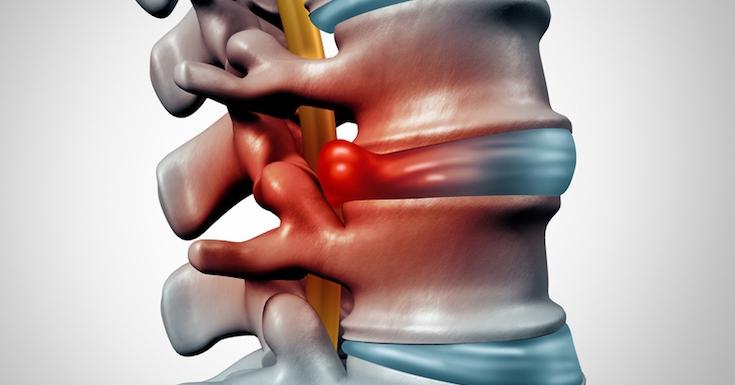Are you curious to know what is disc extrusion? You have come to the right place as I am going to tell you everything about disc extrusion in a very simple explanation. Without further discussion let’s begin to know what is disc extrusion?
Our spine is a remarkable structure composed of individual bones known as vertebrae, cushioned by intervertebral discs. These discs act as shock absorbers and provide flexibility to the spine. However, as we age or due to injuries, these discs can develop problems, including disc extrusion. In this blog, we’ll explore the concept of disc extrusion, its causes, symptoms, diagnosis, and treatment options.
What Is Disc Extrusion?
Disc extrusion, also referred to as herniated disc with extrusion, is a spinal condition that occurs when the inner, gel-like substance of an intervertebral disc (nucleus pulposus) pushes through the outer layer (annulus fibrosus) and extends into the spinal canal or surrounding area. This condition is more severe than a disc protrusion or bulge, as it involves a more significant displacement of disc material.
Causes Of Disc Extrusion
Disc extrusion can result from various factors, including:
- Aging: The natural aging process leads to wear and tear of spinal discs, making them more susceptible to herniation.
- Trauma or Injury: A sudden injury or trauma, such as a fall or lifting a heavy object improperly, can cause a disc to extrude.
- Degenerative Disc Disease: Over time, spinal discs may degenerate, becoming less pliable and more prone to herniation.
- Repetitive Strain: Repetitive movements or heavy lifting over an extended period can weaken discs and increase the risk of extrusion.
Symptoms Of Disc Extrusion
The symptoms of disc extrusion can vary depending on the location of the affected disc and whether it puts pressure on nearby nerves or the spinal cord. Common symptoms include:
- Back Pain: The most prevalent symptom is often localized back pain, which may be persistent or intermittent.
- Radiating Pain: If the extruded disc presses against a nerve root, it can cause radiating pain, numbness, or tingling sensations that extend into the arms or legs. This condition is known as radiculopathy.
- Muscle Weakness: In severe cases, muscle weakness and loss of reflexes can occur when nerves are compressed.
Diagnosis Of Disc Extrusion
To diagnose disc extrusion, a healthcare provider will typically perform a comprehensive evaluation, including:
- Medical History: Your doctor will ask about your symptoms, medical history, and any recent injuries.
- Physical Examination: A physical examination may include tests to assess your strength, reflexes, and range of motion.
- Imaging Studies: X-rays, MRI (Magnetic Resonance Imaging), or CT (Computed Tomography) scans may be ordered to visualize the spine and confirm the presence of disc extrusion.
Treatment Options For Disc Extrusion
The treatment approach for disc extrusion depends on the severity of symptoms and the impact on your daily life. Common treatment options include:
- Conservative Treatment: Mild cases of disc extrusion may respond to conservative treatments, such as rest, physical therapy, and pain medication.
- Epidural Injections: Steroid injections into the epidural space can help reduce inflammation and relieve pain.
- Surgery: In cases where conservative treatments fail or if there is severe nerve compression, surgical intervention may be necessary. Surgery may involve discectomy, which removes the extruded disc material, or spinal fusion, which stabilizes the spine.
Conclusion
Disc extrusion is a condition that can cause discomfort and limit your daily activities. Early diagnosis and appropriate treatment can significantly improve your quality of life. If you experience persistent back pain, radiating symptoms, or muscle weakness, consult a healthcare professional for a thorough evaluation and guidance on the most suitable treatment options tailored to your condition.
By visiting Thesbb you can get more knowledge about various topics.
FAQ
Is A Disc Extrusion Serious?
Disc extrusion is considered a serious injury because it affects the spinal cord. Even in minor cases, a patient should seek medical attention to make sure the condition does not worsen by returning to work or other normal activities too quickly.
What Is The Best Treatment For Disc Extrusion?
Disc extrusions have been safely treated with surgery for years. The most common surgery used is a spinal fusion. With spinal fusion, the goal is to remove the herniated part of the disc.
Does An Extruded Disc Need Surgery?
When & How to Seek Medical Care. Fortunately, the majority of herniated discs do not require surgery. With time, the symptoms of sciatica/radiculopathy improve in approximately 9 out of 10 people. The time to improve varies, ranging from a few days to a few weeks.
What Is L4 L5 Disc Extrusion?
At L4/L5 a very large disc extrusion is present, largely filling the canal, displacing the theca posteriorly, with little CSF remains around the cauda equina, on the because the bony canal is actually quite capacious. Both L5 nerve roots are severely compressed in the subarticular recesses.
I Have Covered All The Following Queries And Topics In The Above Article
What Is Disc Extrusion
What Is A Disc Extrusion
What Is Disc Extrusion With Caudal Migration
What Is Paracentral Disc Extrusion
What Is A Central Disc Extrusion
What Is Central Disc Extrusion
What Is Posterior Disc Extrusion
Mri What Is Disc Extrusion
What Is A Disc Extrusion In The Lower Lumber
What Is Foraminal Disc Extrusion With Evidence Of Annular Tear
What Is 3mm Disc Extrusion
What Is The Difference Between A Bulging Disc And An Extrusion?
What Is A Extrusion Of Disc?
What Is Shallow Disc Extrusion
What Is Moderately Sized Diffuse Disc Extrusion In The Cervical Spine
What Is L4-5 Trace Anterolisthesis 2mm And A 9mm Disc Extrusion
What Is Disc Extrusion
What is the difference between disc protrusion and disc sequestration?

